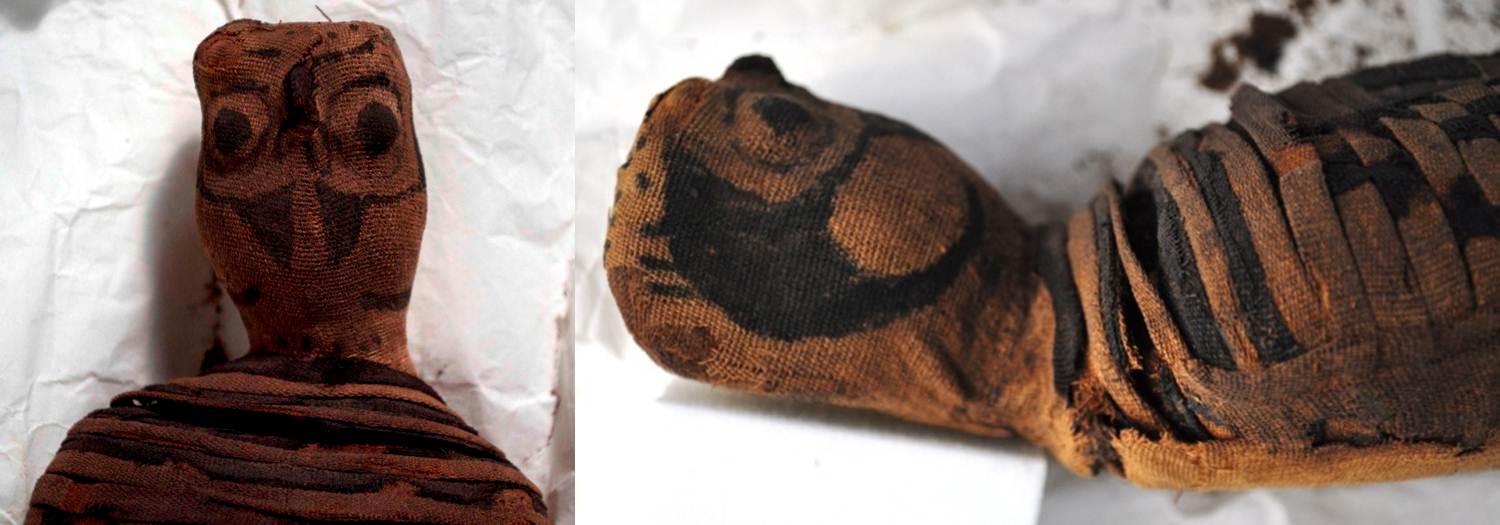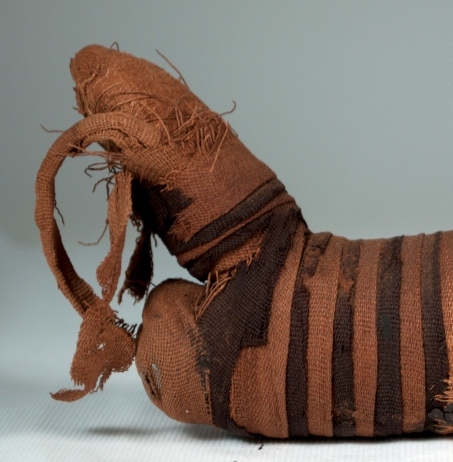As you’ve seen in one of my latest posts, I have been working on the treatment of our falcon mummy, but of course I saved one of the most challenging parts for last. I couldn’t capture a great photo of this, but one of the biggest condition problems with the falcon is that he had a seriously floppy head. This was caused by tears, breaks and losses of the linen fabric in both the front and the back of the body, just below the neck.

Two detail shots of the falcon mummy before treatment, showing breaks and separation of the textile near the neck
Actually, one of the best images showing this is in our online collections database found by following this link. It is evident that there was nothing supporting the falcon’s head in this photo, allowing it to fall backward.
To stabilize this area, I filled the gaps using Japanese tissue paper and methyl cellulose, the same adhesive I used to repair the textile on the feet of this mummy. Japanese paper is commonly used in conservation for the repair of artifacts and paper-based materials. As the name implies, this is paper made in Japan, usually from kozo fibers, which come from the inner bark of the Kozo, or Paper Mulberry tree.

Gap in back of the falcon’s neck during (left) and after (right) filling and mending with Japanese tissue paper.
In areas where the Japanese tissue paper would be visible, I toned the paper beforehand using Golden acrylic paints. I made most of the fills from the back, which allowed the separated area in the front to join together nicely, requiring little additions in this area.
Many of the dark-brown dyed linen elements were also very fragile and actively detaching, so I consolidated them using a 2.5% solution of Acryloid B-72 in a 50:50 solution of acetone/ethanol. Finally, I created a storage support for the falcon – even though the head is no longer floppy, this will provide important support under the head to reduce stress in this area and to avoid continued damage or failure of the repair.
The falcon mummy is now ready for transport over to the hospital later this year for CT scanning. CT scanning will be able to tell us if there is a falcon inside the wrappings, and will also provide important information about how these animal mummies were made. Additionally, the CT images will be an important part of my conservation documentation – I will be able to annotate which materials I added as part of the treatment process, to eliminate confusion over what is original and what is not.
Our falcon mummy will also be going on display later this year – and you can visit him anytime by stopping by the Artifact Lab!







